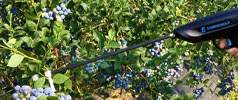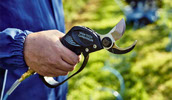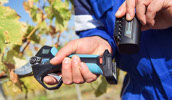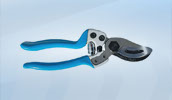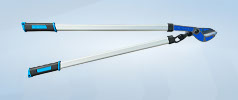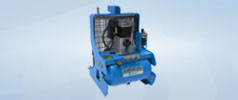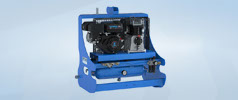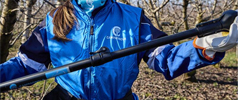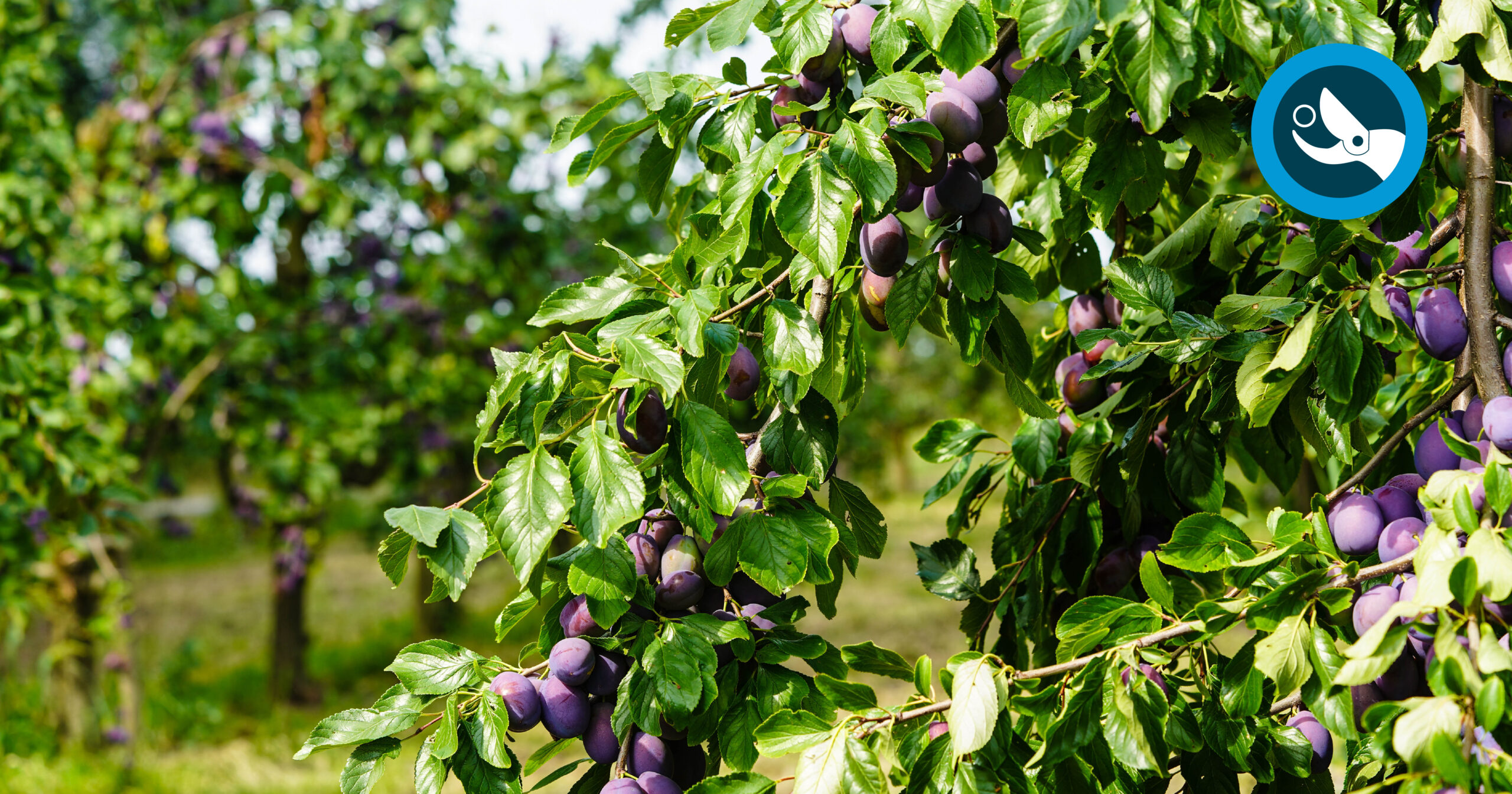Pruning plum trees is not just a routine task—it’s a real investment in the future of your fruit trees. Doing it properly is crucial for the health of the plants, ensuring abundant and high-quality production, and optimizing fruit size.
A well-pruned plum tree is stronger, healthier, and more productive. But to achieve these goals, in addition to proper technique, the right tools are essential: choosing the proper Campagnola tools is the first step toward truly effective pruning.
Let’s explore in more detail the ideal periods, techniques, and methods to prune this fruit tree correctly.
When to Prune a Plum Tree: Ideal Periods and Conditions
There are two key times of the year to prune plum trees: the winter phase and the summer phase. Each serves a specific purpose and requires careful attention to weather conditions to maximize benefits.
Winter Pruning of Plum Trees
Winter pruning is the most important intervention and should be carried out when the tree is bare, preferably between late winter and early spring. It serves as formative pruning for young trees and containment and productive pruning for mature ones.
Its main goal is to define the tree’s structural framework and eliminate unproductive, dry, damaged, or diseased branches that could compromise the plant’s overall health.
It is essential to prune only when there is no risk of severe frost immediately after cutting, to avoid damaging exposed tissues.
Summer Pruning of Plum Trees
Summer pruning, or green pruning, is usually done after the fruit harvest, especially for early varieties. This intervention aims primarily to limit excessive vegetative growth, which could divert energy away from next year’s buds.
It’s an excellent opportunity to control growth and concentrate the plant’s resources on the best fruit-bearing branches. Green pruning also improves light penetration and air circulation within the canopy, essential for enhancing the quality of next year’s fruits and reducing the risk of disease.
It’s also good practice, in any season, to remove suckers and water sprouts, especially on younger trees, as these branches can drain valuable energy from the plant.
How to Prune a Plum Tree: Techniques and Recommended Tools
Pruning plum trees requires precision and expertise to avoid compromising future yields and plant health. To ensure every cut is clean and smooth—preventing damage, disease, and productivity loss—it’s crucial to use professional, high-quality tools.
Campagnola offers a complete range of solutions designed to make pruning efficient and less tiring. What are the main tools?
- Battery-powered electric shears: For precision cuts on medium-diameter branches, our electric shears with plug-in batteries—like the STARK XM or STARK XL models—offer great handling and freedom of movement. The batteries are often interchangeable among different tools in the same product line, ensuring uninterrupted daily work.
For those seeking top-tier Italian-made tools, NOVA 35 and NOVA 40 combine lightness and versatility. They can be managed via the innovative MyCampagnola app and are ideal for quick and clean cuts.
For higher branches, in addition to the compatibility of plug-in battery models with convenient extension poles, you can use STARK 90-160-220 V1 electric shears on pole, which allow safe operation directly from the ground.
Other Essential Tools for Pruning Plum Trees
In addition to battery-powered shears, there are other tools that can significantly improve the quality and safety of your pruning work:
- Manual pruning shears: Ideal for fine and precision cuts on thin or green branches. Campagnola offers various models, including bypass and anvil shears, to suit every need and plant type.
- Loppers: Designed for cutting medium to large branches, they use a two-handed leverage system that multiplies the applied force and ensures clean, low-effort cuts. Campagnola offers both manual and pneumatic loppers.
- Pruning saws: For woody or dry branches too thick for shears. Available with fixed or folding blades, they ensure smooth and safe cuts without damaging the tree.
- Extension poles: Fixed or telescopic, they are essential for pruning high branches without the need for ladders. Compatible with many Campagnola tools, they ensure safe and efficient work.
- Pneumatic shears and pruners: Perfect for intensive use and large-scale pruning. Campagnola offers a wide selection of models with different cutting capacities and ergonomic designs to reduce fatigue.
- Protective equipment (PPE): Don’t forget safety! Always wear cut-resistant gloves, protective glasses, and, if necessary, helmets to work with peace of mind.
Choose Campagnola for Your Pruning
Choosing the right pruning tools means investing in the health of your trees, your safety, and your productivity.
Campagnola offers innovative and reliable solutions, designed to meet the needs of both professionals and hobbyists. Our range includes electric, pneumatic, and manual pruning tools, as well as essential accessories for working safely and efficiently.
Need help finding the ideal tool?
Our network of resellers and specialized technicians is at your disposal for personalized advice and after-sales support.
Explore the Campagnola range and discover how to improve your work, one cut at a time!
- Electric chain pruners: When dealing with thicker branches, electric chain pruners become essential. Plug-in battery models such as T-REX and T-FOX are compact and powerful, ideal for medium to large branches, while the handy T-CAT M V1 is perfect for finishing cuts. For work on higher canopies, the T-REX 160-240 and T-REX 250-300 telescopic versions offer versatility and performance.
If extended autonomy is needed, the ideal solution is the KRONOS 58 electric pruner, which is well-balanced and powered by the high-performance LI-ION 700 backpack battery, delivering hours of uninterrupted operation. - Pneumatic shears and loppers: For those who prefer the constant and uninterrupted power of compressed air, Campagnola’s pneumatic solutions are synonymous with strength and effectiveness for intensive use. Pneumatic shears such as VICTORY (also available in VICTORY R and VICTORY WITH ADAPTER versions), SUPER STAR DOUBLE CUT, STAR 40 WITH ADAPTER, and STAR 30 are ideal for clean cuts on fruit trees. For even larger branches, the STAR 50 and F/6 U pneumatic loppers can handle cuts up to Ø 50 mm.
- Pneumatic chain pruners: For the toughest operations on large branches or at high heights, pneumatic chain pruners such as LASER, LINX, or AUTOLUBE M.3 deliver exceptional performance. Many of these models are specifically designed for use with fixed or telescopic extension poles, allowing you to work with precision and power in any condition.
- Manual tools: The Campagnola range also includes manual shears, saws, and loppers – irreplaceable tools for specific tasks and for those who pay close attention to detail.
To ensure the effectiveness and durability of Campagnola tools, regular routine maintenance and thorough cleaning of their components are essential.
Pruning Schedule for Plum Trees: How to Intervene Year by Year
An effective pruning schedule follows the plant’s development from its juvenile phase to full maturity, adapting to the chosen training system (e.g. vase, spindle, etc.). For plum trees, the vase shape is often recommended to optimize light penetration and make harvesting easier: this structure develops with open branches starting about 70–100 cm from the ground.
- From year one to three (training pruning): During this phase, the goal is to establish the main framework of the plant. Cuts are aimed at creating a balanced structure with a few well-distributed primary branches that will form the base of the adult canopy. In this period, branches that compete with the main scaffold or grow in unwanted directions are primarily removed.
- From full maturity onwards (maintenance pruning): The focus shifts to maintaining shape and stimulating fruiting. Branches are thinned to ensure proper air circulation and internal light exposure, and those that have already fruited heavily are removed.
At every stage, it is crucial to eliminate crossing branches (which can cause wounds), as well as the aforementioned suckers and water sprouts. Dead branches, those growing inward, or those shading each other should also be removed to optimize productivity and fruit quality.
- Pruning Plum Trees: When and How to Do It
- Young Plum Trees, European Varieties, Goccia d’Oro, Queen Claudia: Differences in Pruning
While plum tree pruning follows general principles, it must be adapted to the growth stage of the tree and, most importantly, to the specific variety.
Young plum trees require light and targeted pruning. The primary goal is not immediate production, but the development of a solid and well-balanced structure. Only branches that are strictly necessary to shape the main framework and encourage harmonious growth should be removed.
European plum varieties (such as Queen Claudia or Goccia d’Oro) tend to fruit on spurs and mixed branches. They require regular but not aggressive pruning to avoid compromising flowering and future yields. The intervention should aim to thin out excess branches and maintain a balance between vegetative growth and fruit production, avoiding excessive cuts that may trigger vegetative growth at the expense of fruiting.
Some Japanese-Chinese plum varieties may have slightly different needs, as they often produce more fruit on young wood. This may require a pruning approach that encourages frequent renewal of fruiting branches.
In any case, adapting pruning intensity and technique to the specific variety is crucial, while always keeping in mind the key principles of structural balance, air circulation, and light penetration.
Common Pruning Mistakes to Avoid with Plum Trees
Poorly executed pruning can do more harm than good. What are the most common mistakes to avoid for a healthy plum tree?
- Don’t prune too late in winter or too early in summer: Pruning at the wrong time—such as during risk of severe frost or extreme summer drought—can expose the tree to diseases or delay recovery.
- Avoid drastic cuts on unaccustomed mature trees: An overly harsh intervention on a tree that hasn’t been pruned regularly may cause significant stress, reduce fruiting, and encourage excessive sucker growth.
- Avoid rough or torn cuts: Inaccurate cuts or torn bark create entry points for pathogens and fungi, which can lead to wood diseases. This is why using sharp tools suited to the branch diameter is essential.
- Don’t forget to clean or disinfect your tools: Neglecting to sanitize tools between trees is a major mistake that can spread disease. Regular maintenance not only ensures tool efficiency but also maximum hygiene.
Conclusion – Every Plum Tree Has Its Rhythm, but Technique Is Key
Pruning a plum tree is an art that requires knowledge, observation, and experience. We encourage every grower to carry out regular and thoughtful pruning, tailored to each variety’s needs and their production goals. It’s a time investment that pays off with healthier trees and abundant, high-quality harvests.
For all these operations, using Campagnola tools ensures not only precise cuts but also comfort and safety for the operator. From hand pruners to powerful electric and pneumatic solutions, each tool is designed to best support those who prune with passion and professionalism.
Browse the Campagnola website and find your perfect ally for lush fruit trees!









